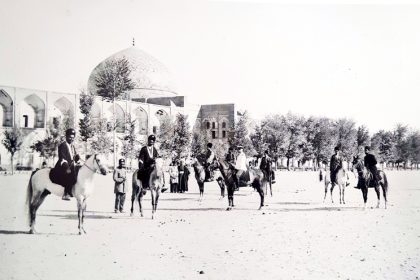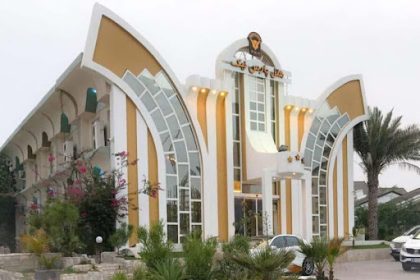Kalate Yavar Bojnoord went under the hands of archaeologists.
The General Director of Cultural Heritage, Tourism and Handicrafts of North Khorasan announced the emergency excavation in Kalate Yavar area with the permission of the Cultural Heritage Research Institute headed by Ali Akbar Vahdati.
Ali Mostofian said:
An emergency excavation is being carried out in the area of Kalate Yavar with the permission of the Cultural Heritage Research Institute headed by Ali Akbar Vahdati, and so far four trenches have been opened within the scope of the construction project and traces of four Bronze Age burials have been identified in this area.
Director General of Cultural Heritage, Tourism and Handicrafts of North Khorasan stated:
The burials discovered in the sedimentary layers consisting of river sand are simple pit graves that are scattered around the central area of the site. One of these burials did not have a headstone, and in the rest of the graves, burial gifts including pottery, bronze pins, and stone or bone beads were found, most of which are characteristic of the Great Khorasan civilization. Bronze Age graves of the Greater Khorasan civilization have been found in several other ancient sites in North Khorasan and neighboring eastern countries of Iran in addition to Kalate Yavor, which shows the cultural relations and political and social connections of large areas of eastern Iran.
Mostufian stated that the emergency excavation field program in Kalate Yavor will continue until all the pieces of land containing ancient artifacts are cleared.
The ancient site of Kalate Yavar was discovered by accident in the year 1400 during residential construction by the people of Kalate Yavor village in the outskirts of Bojnord city. In 1402, archeological researches were conducted in the form of archeogeophysical surveys by magnetometry under the supervision of Koresh Mohammadkhani in Kalate Yavar, which led to the identification of scattered anomalies in different parts of the ancient site. Following this investigation, exploration and speculation in Kalate Yavor under the joint supervision of Koresh Mohammadkhani and Ali Akbar Vahdati proved the existence of human burials and remains of Bronze Age architecture in Kalate Yavor.
He said:
Due to its proximity to the village, the lands of Kalate Yavar were annexed to the village of Kalate Yavor in the past years and separated by the Islamic Revolution Housing Foundation to provide rural housing. After conducting archeological studies, part of the separated land that was located within the area of the site was removed from the rural housing provision plan. Currently, due to the implementation of the construction project of 119 residential units in the vicinity of the ancient site of Kalate Yavar, part of the works of this ancient site is endangered, so that in two pieces of land, the remains of human burials of the Bronze Age were observed, so the construction project in this part was stopped and explored. An emergency was put on the agenda for documenting and saving the works in these pieces.
RCO NEWS

















